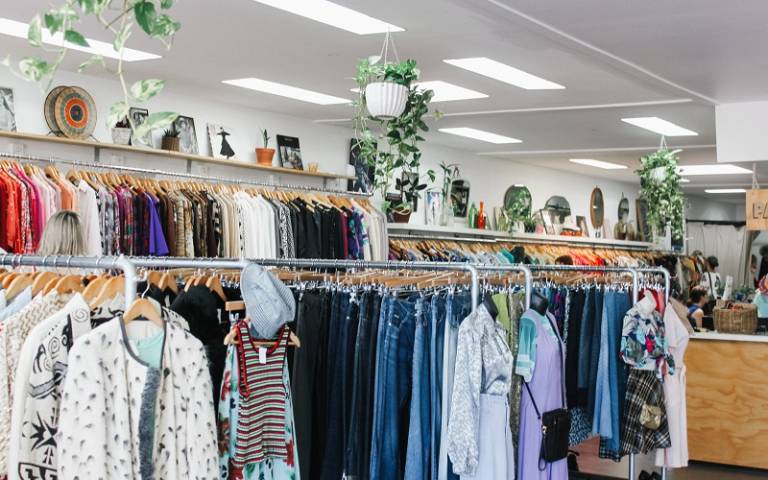Event explores the hidden histories of charity shops
18 November 2020
UCL Institute of Education (IOE) academic Dr Georgina Brewis has delivered a talk about the histories of charity shops as part of the Being Human Festival of the Humanities.

Being Human is the UK’s national festival of the humanities, led by the School of Advanced Study, University of London in partnership with the Arts and Humanities Research Council and the British Academy.
The event included a virtual tour where attendees could browse charity shops of the past. Dr Brewis and Dr George Gosling (University of Wolverhampton) guided the attendees from the outside of the stores to the inside so they could see people’s roles as workers and shoppers.
Charity shops have a longer and more varied history than many people realise. Their function goes well beyond fundraising to job creation, providing market access for goods made by blind and disabled craftspeople, and as important local spaces for education, campaigns and sociability.
Writing in a blog published on the British Academy website, Dr Brewis and Dr Gosling note: “Charities matter, and their history matters too. We can’t understand the history of the UK without examining the central role played by voluntary action. It has helped to forge our national systems of education, health and social care, form our cultural, leisure and sporting lives and shaped our relations with the wider world. Yet, the archives of voluntary organisations are uniquely vulnerable – they lack both the legal protection afforded to records produced by government and the financial resources and support networks available to other private archives.
“Only a very tiny number of British charities have professional archivists. Some have deposited or donated records to a university or the local authority’s records office, but many more retain archives in-house. The conditions of how these records and objects are stored and preserved, the extent of cataloguing and the nature of access varies hugely across the sector.”
Dr Brewis added: “We hope that by attending the virtual tour, people will come away both with a deeper understanding of the often forgotten history of charity retail, and a better understanding how objects preserved in charity archives can help us to tell these stories.”
Links
- Shopping for a cause?
- Being Human Festival
- View Dr Georgina Brewis’s research profile
- Charity and Voluntary Sector Archives
- Department of Education, Practice and Society
Image
- Photo by Prudence Earl on Unsplash
 Close
Close

